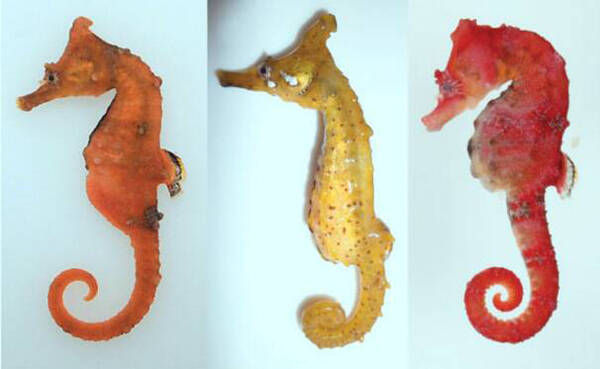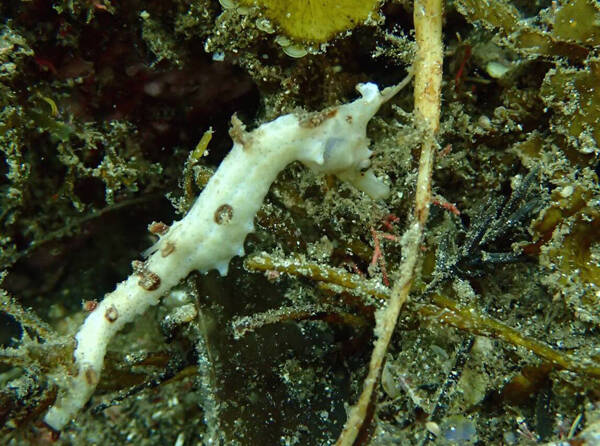High-crowned Seahorse is an animal of the Syngnathidae family and the genus Hippocampus.

The scientific name of the crowned seahorse, "Hippocampus coronatus", was often used as a synonym for the flower seahorse (Hippocampus sindonis) in the past. However, morphometric and genetic studies have shown that the two species are not the same.
The crown seahorse is a small warm-water fish that lives in shallow waters. It is not very good at swimming, and mainly relies on the coordination of the pectoral, dorsal and anal fins to swim. The tail has the ability to curl and wrap around seaweed and other floating objects. It mainly feeds on copepods, barnacle larvae of cirripeds, larvae and adults of shrimps, etc.
The crown seahorse is dioecious. When the male crown seahorse reaches sexual maturity, there is an egg brooding sac at the rear end of the anus. The mature female crown seahorse will lay eggs in the brooding sac. The breeding season is from June to November. Under suitable conditions, the young fish can be hatched in 8-20 days. It can reproduce several times a year, the optimal temperature for reproduction is 20-30℃, and the number of eggs varies from dozens to hundreds.

The whole dried crown seahorse is used as medicine, and its name is seahorse. The protein content is 67.9-73.56%. Its hydrolyzed amino acid content is relatively high, with a total amount of 59..85-65.82%. Among the 17 kinds of amino acids contained, 7 kinds are essential amino acids for human body, accounting for about 30% of the total amino acids. It tastes sweet, salty and warm. It enters the liver and kidney meridians. It has the effect of warming the kidney, strengthening yang, dispersing knots and reducing swelling. It is mainly used to treat impotence, enuresis, asthma caused by kidney deficiency, and traumatic injuries. It is also used to treat carbuncle and furuncle.
Regarding the breeding of crown seahorse: the size of the breeding fish tank is not limited, but it is necessary to pay attention to the appropriate relationship between the size of the water body and the number of breeding. No special landscaping is required, but seaweed or artificial seaweed is required as attachment. If it is to be mixed with other marine fish, it is necessary to pay attention to the safety of the crown seahorse, so generally only small fish of the goby, damselfish, and cardinalfish can be mixed. Feeding zooplankton, live bait is best, frozen artemia or water fleas, mysid shrimp, and hair shrimp are also OK. The feeding method is small amounts and multiple times.
There are no specific surveys or population estimates for the crowned seahorse (2015). According to a survey, the density of crowned seahorses in Yeosu, South Korea in 2000 was 2.9/km2 (Choi et al. 2012). In Dongdae Bay, South Korea, fishermen caught a total of 164 crowned seahorses in one year (2006-2007) (Huh et al. 2014).
Listed in the IUCN Red List of Threatened Species (IUCN 2015 ver 3.1) - Data Deficient (DD).
Listed in Appendix II of the Convention on International Trade in Endangered Species of Wild Fauna and Flora (CITES).
Protect wild animals and eliminate game.
Maintaining ecological balance is everyone's responsibility!